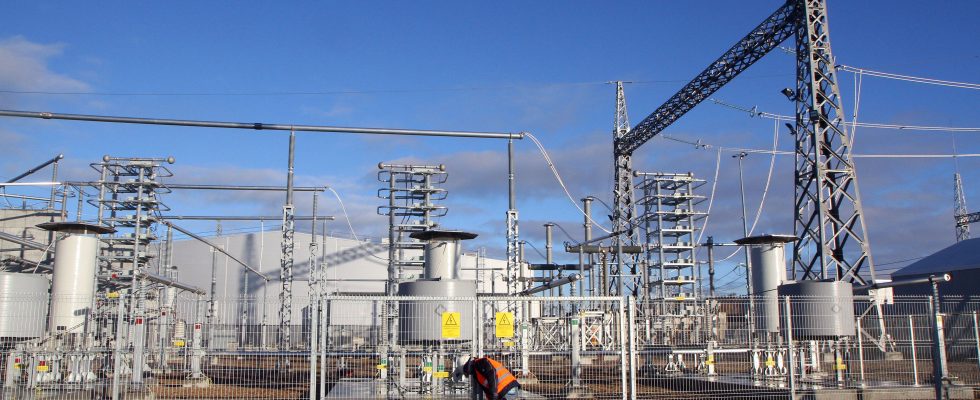A new era is dawning for the Baltic States. The leaders of Lithuania, Latvia and Estonia have finally synchronized their calendar, Thursday, August 3, to connect to the electricity grid of the European continental bloc. The stakes are high: definitively abandon the network of which they are part, a legacy of the Soviet Union piloted by the Russian giant, and to which Belarus also belongs. The Baltic “energy island” will therefore no longer exist by February 2025, according to the joint declaration signed by the Prime Ministers, almost a year ahead of the schedule initially mentioned. This is an umpteenth rapprochement of these three countries towards the West and an additional step to free themselves from the influence of the Kremlin.
The European Commissioner for Energy, Kadri Simson, hailed “a historic agreement”. “Not only will the project bring energy security to the region and complete the European integration of the three Baltic states, she noted, but it will also support the implementation of the ‘Green Deal’ by guaranteeing secure, affordable energy. sustainable development for the Eastern Baltic Sea region and for the Union as a whole”.
This movement, already in the pipeline for several years, was accelerated by the invasion of Ukraine. “It is very clearly a security signal, a desire to sever ties with Moscow and to avoid any type of Russian manipulation on the frequency of the system”, analysis with L’Express Phuc-Vinh Nguyen, researcher in energy policies at the Jacques Delors Institute. “The announcement, symbolic, also has an important political significance, confirms the economist Jacques Percebois, professor emeritus at the University of Montpellier and director of the Center for Research in Economics and Energy Law (Creden). It means that these states are freeing themselves from their dependence on Russia.”
“Work as a whole”
This emancipation is the result of a process that began in the 2000s, when the Baltic nations, independent since 1991, began their opening up to the West: joining the European Union, NATO… But in terms of energy , their infrastructures, integrated into the Soviet network after the Second World War, remained turned towards the East. Breaking free from Russian cables required investment, backed by the EU. Connections have been installed between Lithuania and Poland (LitPol Link), Sweden (NorthBalt), and between Estonia and Finland (Estlink 1 and 2). An agreement signed in 2018 also unlocked €1.6 billion in European funding to modernize existing infrastructure.
The choice of a deadline in February 2025 was motivated by technical reasons. “It’s like for a transplant: we must have the same standards and be certain that everything is going well, explains Laurent Rosseel, deputy director of dispatching at RTE France and coordinator at ENTSO-E, the association representing managers electricity transmission network across Europe. Countries need to complete a catalog of technical measures. They are on the right track, but it takes time.”
“We must operate as a whole” and not disconnect the States one by one, adds Phuc-Vinh Nguyen. However, the three countries, which all stopped importing Russian electricity in May 2022, were not on the same wavelength. Having adopted a more aggressive stance towards Moscow, Lithuania pushed to pick up the pace and join the EU in early 2024 – the national operator even successfully tested last April, to disconnect from the Russian network for a day. Latvia and Estonia preferred to temporize. “I understand that Lithuania wants to go faster, but the problem is that […] Estonia would pay the highest price for such an approach, in terms of costs, but also the risk of power outages”, justified Estonian Prime Minister Kaja Kallas in mid-July, on the sidelines of a NATO summit. .
“The cost will certainly be a little higher for Estonia and Latvia, agrees Jacques Percebois. In addition, Lithuania is quite dependent on electricity imports, while the others have more national resources.” This connection will indeed facilitate trade and “will further legitimize the interconnections of the Baltic countries with neighboring nations, completes Phuc-Vinh Nguyen. It also makes it possible to align with the EU’s climate objectives – carbon neutrality in 2050 – because the acceleration of renewable energies requires ever more interconnections to control their variability”. The upcoming arrival of Lithuania, Latvia and Estonia will bring “better stability to the quality of the frequency of the European network. The impact is positive, even if marginal given the volume of electricity production in the countries” , summarizes Laurent Rosseel.
One question remains: what about the Russian enclave of Kaliningrad, wedged between Poland and Lithuania to which it is now connected? The experts consulted also have questions. In an analysis published in July 2022 by the Center for European Policy Analysis (CEPA), author and journalist Aliide Naylor noted that “Kaliningrad has already successfully tested the full independence of its power grid in the past”. Proof that Moscow had long anticipated the disconnection of Lithuania and its neighbors.
